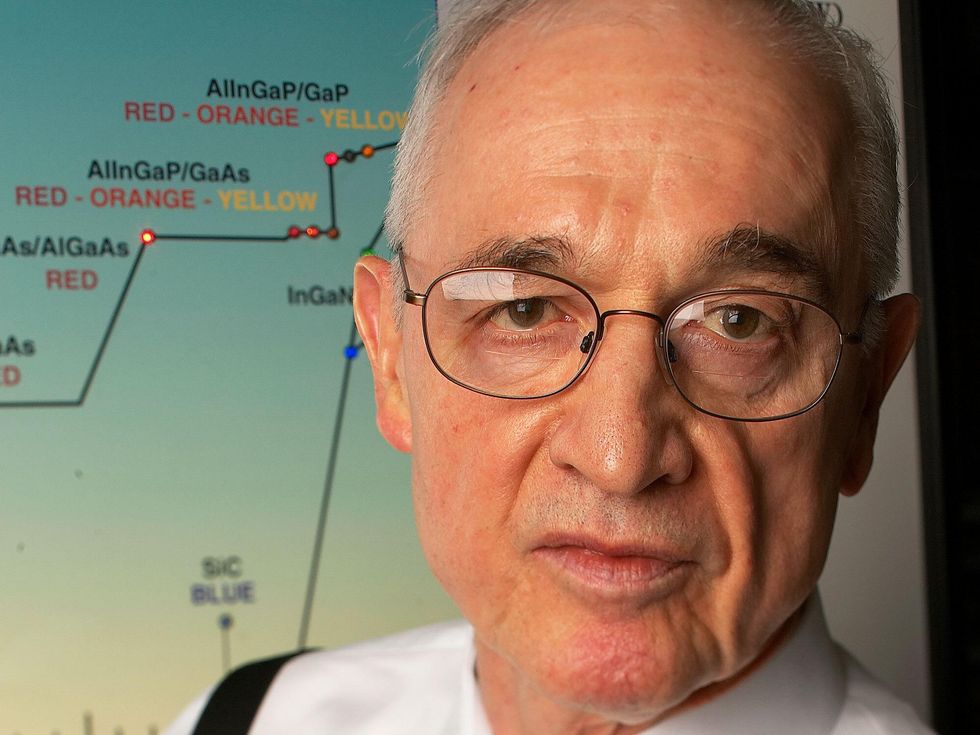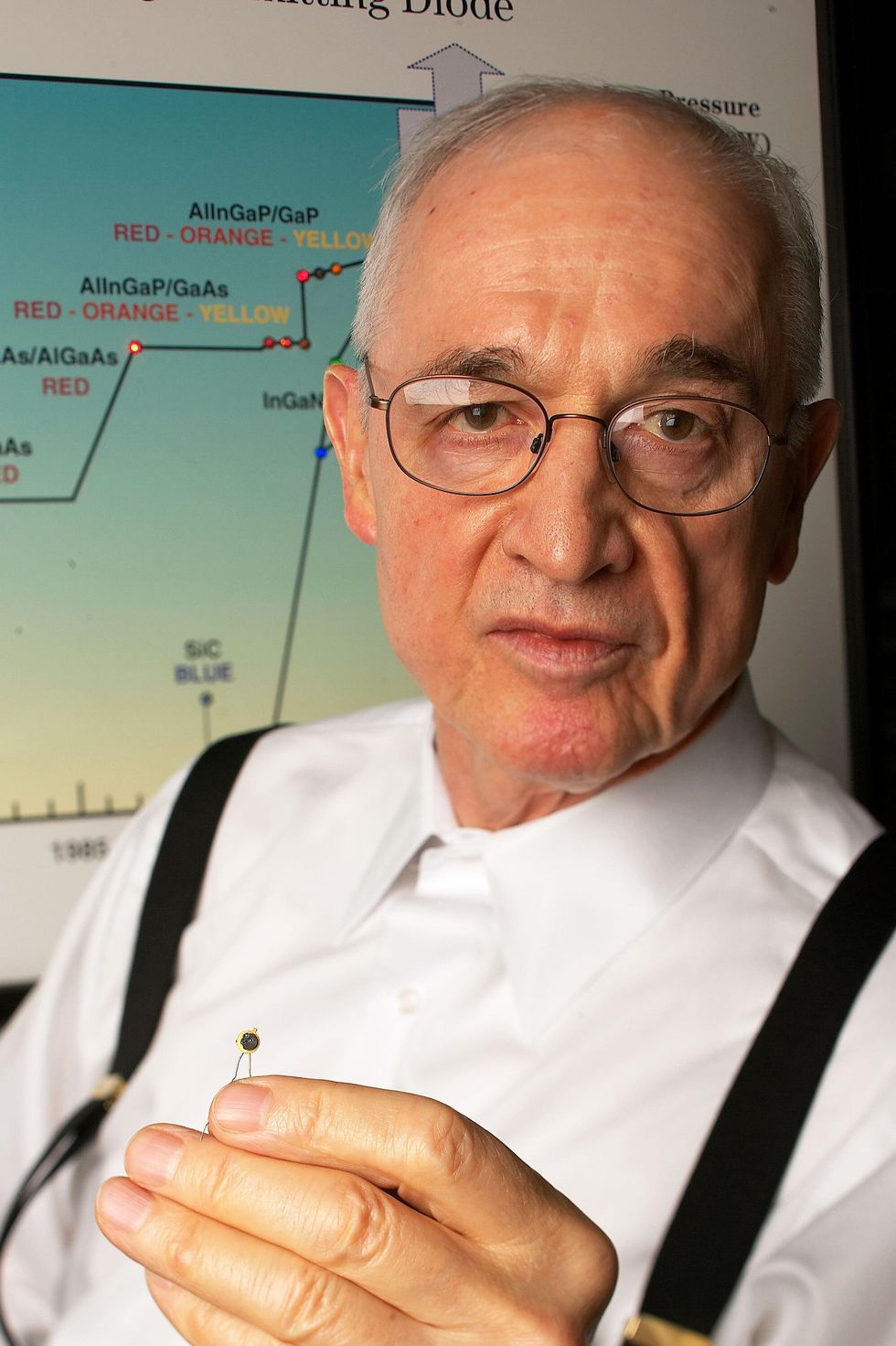

Nick Holonyak, Jr. holds a component of a stoplight that makes use of a more recent LED made by his college students. Ralf-Finn Hestoft/Getty Pictures
Nick Holonyak Jr., a prolific inventor and longtime professor of electrical engineering and computing, died on September 17 at the age of 93. In 1962, though performing as a consulting scientist at Standard Electric‘s Advanced Semiconductor Laboratory, he invented the initial sensible seen-spectrum LED. It is now used in light bulbs and lasers.
Holonyak remaining GE in 1963 to turn into a professor of electrical and laptop or computer engineering and researcher at his alma mater, the College of Illinois Urbana-Champaign. He retired from the college in 2013.
He acquired the 2003 IEEE Medal of Honor for “a career of groundbreaking contributions to semiconductors, which includes the advancement of semiconductor alloys and heterojunctions, and to visible mild-emitting diodes and injection lasers.”
LED and other semiconductor field breakthroughs
Soon after Holonyak acquired bachelor’s, master’s, and doctoral levels in electrical engineering from the University of Illinois, he was employed in 1954 as a researcher at Bell Labsin Murray Hill, NJ There he investigated silicon-based mostly digital units.
He left in 1955 to serve in the US Military Signal Corps, and was stationed at Fort Monmouth, NJ, and Yokohama, Japan. Right after currently being discharged in 1957, he joined GE’s State-of-the-art Semiconductor Laboratory, in Syracuse, NY
Even though at the lab, he invented a shorted emitter thyristor product. The 4-layered semiconductor is now located in light-weight dimmers and ability applications. In 1962 he invented the crimson-mild semiconductor laser, recognized as a diode laserwhich now is identified in cellphones as well as CD and DVD players.
Afterwards that year, he shown the 1st visible LED—a semiconductor resource that emits light-weight when current flows as a result of it. LEDs formerly experienced been designed of gallium arsenide. He developed crystals of gallium arsenide phosphide to make LEDs that would emit seen, red light-weight. His perform led to the progress of the high-brightness, higher-effectiveness white LEDs that are uncovered in a broad variety of applications currently, which include smartphones, televisions, headlights, website traffic signals, and aviation.
Revolutionary study at the University of Illinois
Holonyak left GE in 1963 and joined the College of Illinois as a professor of electrical and laptop engineering.
In 1977 he and his doctoral pupils shown the 1st quantum very well laserwhich later found programs in fiber optics, CD and DVD players, and health-related diagnostic resources.
The university named him an endowed-chair professor of electrical and laptop engineering and physics in 1993. The posture was named for John Bardeenan honorary IEEE member who experienced obtained two Nobel Prizes in Physics as well as the 1971 IEEE Medal of Honor. Bardeen was Holonyak’s professor in graduate school. The two adult males collaborated on investigation tasks until Bardeen’s loss of life in 1991.
Jointly with IEEE Lifestyle Fellow Milton FengHolonyak led the university’s transistor laser investigation heart, which was funded by the US Protection Highly developed Study Jobs Company. There they created transistor lasers that experienced the two light and electrical outputs. The innovation enabled high-velocity communications systems.
More not long ago, Holonyak produced a system to bend light-weight inside of gallium arsenide chips, permitting them to transmit details by light-weight fairly than electrical energy.
He supervised much more than 60 graduate pupils, a lot of of whom went on to grow to be leaders in the electronics subject.
Queen Elizabeth prize, Draper prize, and other awards
Holonyak gained very last year’s Queen Elizabeth Prize for Engineering tea Nationwide Academy of Engineering’s 2015 Draper Prize the 2005 Japan Prize and the 1989 IEEE Edison Medal. In 2008 he was induced to the Nationwide Inventors Corridor of Famein Akron, Ohio.
He was a fellow of the American Academy of Arts and Sciencestea American Physical Cultureand optica. He was also a international member of the Russian Academy of Sciences. In addition Holonyak was a member of the US Academies of Engineering and Science.
Read the full tale about Holonyak’s LED breakthrough in IEEE Spectrum.

